
West Virginia’s Bumpy Road Back
02 Aug, 2015
By David Hodes
West Virginia’s officials want to keep building on the state’s energy legacy — but step things up economically and embrace new businesses that could help the state break out of a cycle of stalled growth.
West Virginia Secretary of Commerce Keith Burdette says that the state has been a huge energy producer for years of both fossil and renewable fuels — and sustainable energy, with one of the largest wind farms east of the Mississippi (the Mount Storm Wind Farm). In fact, the U.S. Department of Energy has determined that the state has significant wind development opportunities.
The state leads the nation with its advanced energy research and a diverse energy portfolio that includes coal, natural gas, biomass, hydrogen, hydro, wind and solar power.
The state has long been — and remains today — one of America’s leading producers of electricity. Two-thirds of the electricity West Virginia generates is exported to the rest of the country. The state ranks third in the country in net interstate sales of electricity and remains a leader in low-cost electricity.
All that energy production helps drive the state’s economy, but economic developers want to see more.
Burdette says that over the course of the last decade or so, the state has systematically started addressing the business climate in an aggressive way by, for example, by cutting corporate taxes three percent to 6.5 percent, eliminating the business franchise tax, and tweaking workers’ compensation insurance rate. “We went from literally some of the highest if not the highest average worker compensation rates in the country to now we’re are in the bottom seven or eight states,” he says.
Overall workers’ compensation insurance rates have declined significantly since the privatization of the system in 2006.
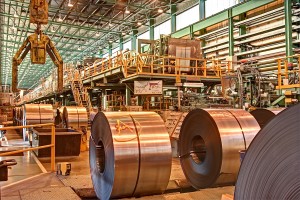
Wheeling-Nisshin’s continuous galvanizing coating line (CGL) at Wheeling-Nisshin, Inc., in Follansbee. The CGL is one of two fully computerized multi-product hot-dip coil coating lines that enable Wheeling-Nisshin to produce over 700,000 tons per year. Photo courtesy Wheeling-Nisshin
Burdette says that now, the cost of doing business in the state is around 14 percent lower than the national average, and the cost of electricity for commercial production needs is 22 percent below the national average. “The state has worked to create the stability at a level that will give confidence to businesses who are dealing with the state,” he says. “And we have done things as much to set the deck as to say, ‘Hey look, we are going to make costs like unemployment insurance competitive. And in order to do so, you don’t have to worry about the state getting into a hole and coming to you for more taxes.”
Down to Business
- West Virginia removed approximately $126 million of business tax burden in fiscal year 2012 and more than $450 million during the past six years.
- West Virginia’s 4.5 percent increase in gross state product was the third-highest rate of growth in economic production of any U.S. state in 2011, with real GDP totaling $55.8 billion.
- West Virginia’s economy will be a major benefactor from Marcellus and Utica shale fields. Ethane, a byproduct found in certain pockets of natural gas, is a key ingredient in plastics. The low cost of producing natural gas and related byproducts is expected to expand the state’s chemical industry.
Industries and Innovations
The state certainly has some heavy-hitter manufacturing in place.
In February, Gov. Earl Ray Tomblin announced that Procter & Gamble Co. will build a new manufacturing plant in Berkeley County. The new facility is just the second manufacturing location that the company has built in the country since 1971, and represents an investment of approximately $500 million. The facility, to be located just south of Martinsburg, will be more than one million square feet, employing more than 700 when it opens its doors in 2017.
It represents one of the largest manufacturing operations in the state’s history.
Toyota Motor Manufacturing West Virginia, in operation since 1996 in Buffalo, annually produces 411,000 4-cylinder engines that are used in the Corolla and 228,000 V6 engines used in the Highlander, Sienna and RX350.
The company expanded with a new transmission line in November, 2014, which marks the eighth expansion of the plant. The new line represents a $90 million investment and raises the total plant investment to more than $1.4 billion.
That theme of enhanced and expanding manufacturing continues in the capital and largest city in West Virginia, Charleston.
Justin Gaull, vice president of economic development for the Charleston Area Alliance (CAA), says that they are looking toward reinvigorating the chemical industry in the area. “We are putting infrastructure in place for that,” he says. That is why the Chemical Alliance Zone (CAZ) is working with existing operations to share infrastructure with new companies interested in coming to the state. CAZ is an economic development organization that promotes the chemical industry in Cabell, Kanawha, Putnam, Wayne and parts of Marshall counties.
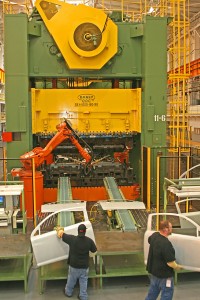
Two men in front of robot machine, carrying doors at the Gestamp stamping facility in South Charleston, West Virginia. Gestamp is an international group dedicated to the design, development and manufacture of metal automotive components. Gestamp opened in a formerly shuttered plant in South Charleston in 2012, and expects to invest at least $100 million and create a minimum of 400 jobs by 2017.
Photo: Ron Snow from the West Virginia Department of Commerce
Gaull says that the automotive industry is growing there as well, with a Gestamp automotive metal stamping plant employing about 400. Gestamp supplies stamped parts to Volkswagen, General Motors, BMW and most of the other large car manufacturers in the world. The $100 million investment in the plant represents one of the company’s largest automotive stamping plants.
To capitalize on the growth of these two industries, Gaull says that the CAA has programs in place to help entrepreneurs, and help create home-grown wealth. “We are trying to recruit a lot of chemistry and material science startups to the area.”
Talent and Education
When Gov. Tomblin took office in 2010, Burdette says, one of the first things he did was fire everyone on the workforce training council and take the chairmanship of the council himself. “He took all of the department heads that had anything to do with workforce development, down to the cabinet level, and put them on the seven-member Workforce Planning Council,” he says. “And he oversaw every agenda item, working hard to establish very clear and high priorities to make that a responsive group going forward.”
In May 5, 2015, Tomblin hosted the first ever workforce summit to review all workforce initiatives and the training needs of businesses investing in the state.
That work is expected to pay off in a better trained workforce. Burdette says that West Virginia is the only place in the world outside of Japan that has produced over a million car engines for Toyota, and other states took notice. “A lot of governors at a recent governor’s meeting asked Millie Marshall, senior vice president of manufacturing at the Buffalo plant, about getting a Toyota plant in their state,” Burdette says. “And she said ‘Follow the West Virginia governor’s workforce development agenda and that will go a long way.’”
Gaull says that one of the big drivers for helping Charleston attract chemical and materials companies to the area is the 258-acre West Virginia Research Technology Park (WVRTP) in South Charleston. WVRTP is home to more than 30,000 patented discoveries, valued at approximately $18 billion. It is comprised of 800,000 square feet of laboratories, chemical pilot plant facilities, engineering and data processing capabilities.
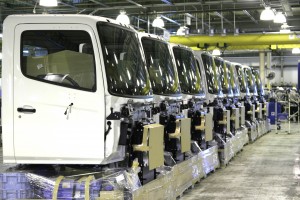
Lineup of Hino trucks in the 194,000 square foot Williamstown plant. Hino represents the Toyota Group in the global market for medium-duty trucks, heavy-duty trucks and buses.
Photo: Ron Snow from the West Virginia Department of Commerce
Assets
The state’s topography is often pointed to as one of the reasons that businesses pass on locating there. It is completely within the Appalachian region and nearly entirely mountainous, making it a no-go for logistics companies or others needing quick delivery access, for example. “There was a Volvo plant that was basically looking for land but we were out of the race for that one because of the topography,” Gaull says.
But there are other smaller parcels of land available, he says, like the one that Toyota in Buffalo is using, along the Kanawha River. “There are sites available, and there are actually established sites with ports,” he says, adding that the old Union Carbide plant, now a Dow plant outside Charleston, has space available there that can be leased independently. “We have quite a bit of infrastructure in the Charleston area, with the rivers and the three interstates coming into town,” Gaull says. The city is at the intersection of interstates 79, 77 and 64. The Kanawha and Elk rivers meet in the city. “So it’s pretty accessible actually to the East Coast market.”
Outdoors and Recreation
West Virginia’s mountainous terrain is perfect for hiking, biking and riding ATVs. Southern West Virginia’s Hatfield-McCoy Trail System is open to ATVs, dirt bikes, horses, mountain bikers and hikers. Rail trails are also good ways to explore the state on foot or bike.
Lifestyle
In addition to being home to one of the state’s regional universities, Charleston is also the location of the West Virginia Power, the state’s minor league baseball team, and the West Virginia Air National Guard.
Gaull says that gives the city a sort of metro feeling. But 15 minutes out of town is the best mountain biking or white water rafting anywhere. “So if we are successful in attracting talent from the University of West Virginia or the University of Charleston, either in state or out of state, and maybe they become an employee of a business, that is a win because we are attracting new talent to the region,” he says.
Even with a few bumps in the road — sometimes literally when discussing topography — Burdette says that the state’s economy is solid. “We diversified the economy dramatically since Governor Tomblin took office, and have created $9 billion in new investment,” he says. “That diversity includes aeronautics, that is agriculture, that is energy and that is manufacturing — a wide assortment of industries.
“We are small but we take the attitude that because we are small we can be more nimble,” Burdette continues. “We like businesses that have a high growth potential but need to start small and need a lot of attention at the beginning. We are small enough and nimble enough to be able to do that for them.”
More Info
www.charlestonareaalliance.org
www.wv.gov
Illustration by Stuart Miles at Free Digital Photos.net
Related Posts
-
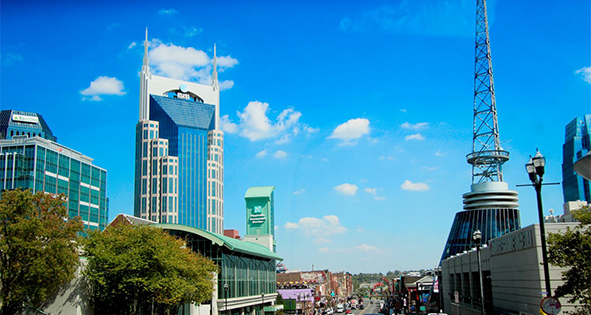
Business Starts Here
-

TEXAS ENTERS 2021 AS WORLD’S 9TH LARGEST ECONOMY BY GDP
-

CALIFORNIA: 5TH LARGEST ECONOMY IN THE WORLD
-

MINNESOTA: FIRST IN FIVE-YEAR BUSINESS SURVIVAL RATE
-

CANADA: Alberta. More Open Than Ever
-

KENTUCKY: The Bluegrass State Is The Right Place To Grow Your Business
-
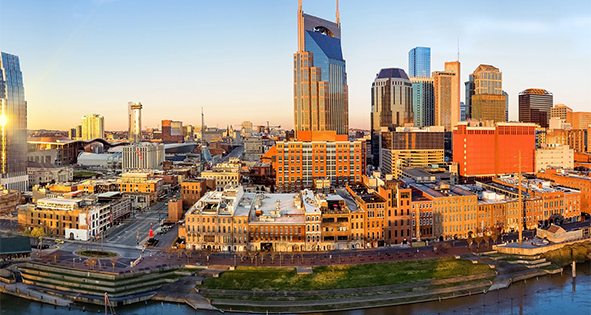
TENNESSEE: Great Brands Deserve the Great State of Tennessee
-
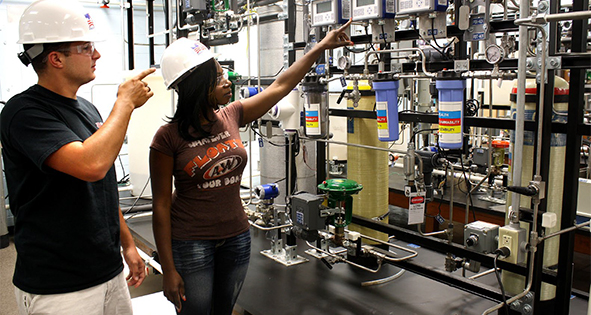
LOUISIANA: Custom Workforce for Expanding
-
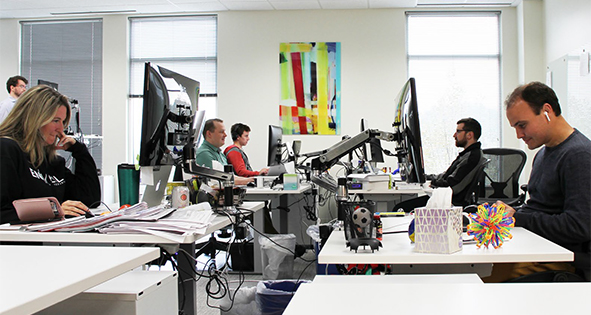
MARYLAND: Home of Innovators
-

MAINE: Yankee Ingenuity









